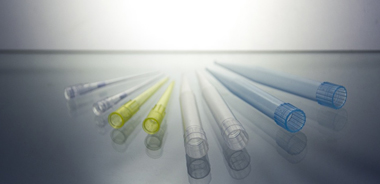
科学家锁定艾滋病病毒死穴
美国和泰国研究人员9月10日在英国《自然》杂志网站上报告说,他们发现了艾滋病病毒外壳上一个易被攻破的弱点,这能够解释之前相关试验中一种艾滋病疫苗的有效性问题,将有助于开发更有效的艾滋病疫苗。
几年前美国和泰国研究人员曾联手进行一个代号为RV144的艾滋病疫苗试验,结果显示这种疫苗能够帮助部分人避免感染艾滋病病毒,但它的有效性只有31%,这一问题让研究人员百思不得其解。
在本次研究中,研究人员对前述试验中一些参与者感染艾滋病病毒的情况进行了仔细分析,结果发现,艾滋病病毒的蛋白质外壳上一个名为V1/V2的地方是疫苗有效与否的关键。在那些注射疫苗且起到保护效果的人群中,疫苗会引起人体免疫系统对艾滋病病毒的这个部位进行攻击;而在那些注射疫苗但仍然感染了艾滋病病毒的人群中,他们感染的病毒多是在V2这个部位发生了变异。
研究人员因此认为,这个部位是艾滋病病毒易被攻破的弱点。据估计,只要艾滋病病毒的这个部位没有变异,注射疫苗可以使感染艾滋病病毒的风险降低80 %。而对于那些这个部位产生了变异以掩盖自身弱点的艾滋病病毒,现在也可以更有针对性地研发新疫苗,针对这个弱点穷追猛打,帮助实现通过注射疫苗来有效控制艾滋病的梦想。
>>延伸阅读
HIV病毒的另一“死穴”:抗体结合靶点
来自美国斯克里普斯研究所的科学家描述了抗体识别和中和HIV细节,揭示了HIV病毒的一个重大弱点,为HIV疫苗研发提供了一个新靶点。相关研究发表在《科学》网络版上题为“A Potent and Broad Neutralizing Antibody Recognizes and Penetrates the HIV Glycan Shield”。
在这项研究中,一种名为PGT 128的抗体能够非常有效地中和HIV。通过X射线晶体学方法,研究者确定了PGT 128的结构。有了这些结构数据,通过改变HIV目标位点,可以观察到PGT 128通过部分与HIV表面多聚糖结合来发挥作用。多聚糖通常覆盖HIV表面,保护HIV,抵御免疫系统攻击。但是,PGT 128能够结合两个相近的多聚糖,并同时接触到其余多聚糖。这说明PGT 128抗原表位很容易进入HIV。
该论文通讯作者Dennis Burton表示,PGT 128为我们研发HIV疫苗展示了一个很好的靶点。

 Increased HIV-1 vaccine efficacy against viruses with genetic signatures in Env V2
Increased HIV-1 vaccine efficacy against viruses with genetic signatures in Env V2
Morgane Rolland, Paul T. Edlefsen, Brendan B. Larsen, Sodsai Tovanabutra, Eric Sanders-Buell, Tomer Hertz, Allan C. deCamp, Chris Carrico, Sergey Menis, Craig A. Magaret, Hasan Ahmed, Michal Juraska, Lennie Chen, Philip Konopa, Snehal Nariya, Julia N. Stoddard, Kim Wong, Hong Zhao, Wenjie Deng, Brandon S. Maust, Meera Bose, Shana Howell, Adam Bates, Michelle Lazzaro, Annemarie O’Sullivan et al.
The RV144 trial demonstrated 31% vaccine efficacy at preventing human immunodeficiency virus (HIV)-1 infection1. Antibodies against the HIV-1 envelope variable loops 1 and 2 (Env V1 and V2) correlated inversely with infection risk2. We proposed that vaccine-induced immune responses against V1/V2 would have a selective effect against, or sieve, HIV-1 breakthrough viruses. A total of 936 HIV-1 genome sequences from 44 vaccine and 66 placebo recipients were examined. We show that vaccine-induced immune responses were associated with two signatures in V2 at amino acid positions 169 and 181. Vaccine efficacy against viruses matching the vaccine at position 169 was 48% (confidence interval 18% to 66%; P = 0.0036), whereas vaccine efficacy against viruses mismatching the vaccine at position 181 was 78% (confidence interval 35% to 93%; P = 0.0028). Residue 169 is in a cationic glycosylated region recognized by broadly neutralizing and RV144-derived antibodies. The predicted distance between the two signature sites (21 ± 7 Å) and their match/mismatch dichotomy indicate that multiple factors may be involved in the protection observed in RV144. Genetic signatures of RV144 vaccination in V2 complement the finding of an association between high V1/V2-binding antibodies and reduced risk of HIV-1 acquisition, and provide evidence that vaccine-induced V2 responses plausibly had a role in the partial protection conferred by the RV144 regimen.
文献链接:Increased HIV-1 vaccine efficacy against viruses with genetic signatures in Env V2







